Home>diy>Architecture & Design>How Do You Know What Kind Of A Design For Your House
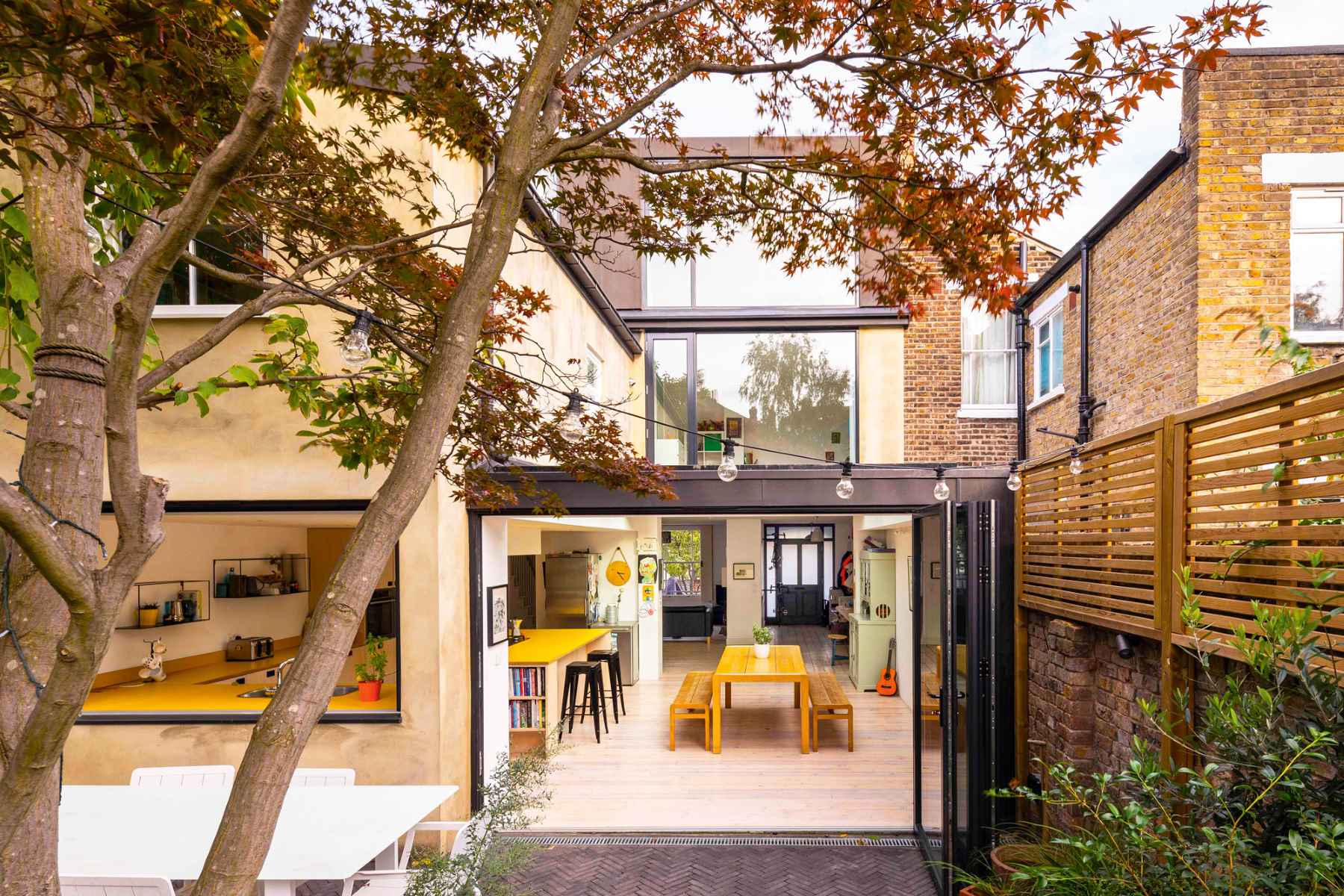

Architecture & Design
How Do You Know What Kind Of A Design For Your House
Modified: December 7, 2023
Find the perfect architecture design for your house and enhance its aesthetics. Learn how to choose the right design that reflects your style and personality.
(Many of the links in this article redirect to a specific reviewed product. Your purchase of these products through affiliate links helps to generate commission for Storables.com, at no extra cost. Learn more)
Introduction
When it comes to designing your dream house, there are countless factors to consider. From the architectural style to the choice of materials and finishes, every decision plays a crucial role in creating a space that reflects your personality and meets your needs. But how do you know what kind of design is right for your house?
In this article, we will explore the key steps you can take to determine the most suitable design for your house. By understanding your style preferences, analyzing your needs and lifestyle, and considering the architectural style of your house, you can make informed decisions that will result in a home that is both beautiful and functional.
So, let’s dive in and discover how you can embark on this exciting journey of designing your dream house!
Key Takeaways:
- Designing your dream house involves understanding your style preferences, analyzing your needs, and considering the architectural style of your house. Seek inspiration, consult with professionals, and make informed decisions to create a beautiful and functional home.
- Incorporating personal touches, balancing aesthetics with functionality, and selecting furniture and decor are essential steps in creating a space that reflects your personality and enhances your everyday life. Trust your instincts, embrace the creative process, and enjoy designing your dream house.
Read more: How Do You Know If Your Chimney Is Open
Understanding your style preferences
One of the first steps in designing your house is understanding your style preferences. Your home should be a reflection of your personality and personal taste, so take the time to explore different design styles and determine what resonates with you.
Start by collecting inspiration from various sources such as interior design magazines, websites, and social media platforms like Pinterest and Instagram. Create a mood board or save images that catch your eye, and analyze the common elements among them. Do you gravitate towards modern and minimalist designs, or are you drawn to more traditional and rustic aesthetics?
Consider the architectural style of your house as well. For example, if you have a Victorian-style home, you may want to incorporate traditional elements and ornate details. On the other hand, if you have a contemporary-style house, clean lines and simplistic designs may be more suitable.
It’s important to keep in mind that your style preferences may evolve over time, so don’t be afraid to mix and match different elements. Eclectic design can be a beautiful way to showcase your unique personality and create a space that is truly one-of-a-kind.
When defining your style preferences, think about the colors, patterns, and textures that appeal to you. Are you drawn to bold and vibrant hues, or do you prefer a more neutral and soothing color palette? Do you like clean and minimal patterns, or do you enjoy bolder and more intricate designs?
Remember, your home should be a place that makes you feel comfortable and reflects your individuality, so trust your instincts and choose a design style that speaks to you. This will serve as a guiding principle throughout the entire design process.
Analyzing your needs and lifestyle
Designing your house is not just about aesthetics, but also about creating a space that caters to your needs and lifestyle. Before diving into the design process, take some time to analyze how you and your family will be using the different areas of your home.
Start by considering the size of your family and their specific needs. Do you have young children who require a play area, or are you empty nesters who need more space for hobbies and entertaining? Understanding the dynamics of your household will help you determine the layout and functionality of each room.
Next, think about your daily routines and activities. Do you enjoy cooking and entertaining, requiring a spacious and well-equipped kitchen? Are you someone who works from home and needs a dedicated home office? Analyzing your lifestyle will help you identify which areas of your house require special attention and customization.
Consider your storage needs as well. Take an inventory of your belongings and determine how much storage space you will require. This will help you design efficient storage solutions and prevent clutter in your home.
Another important aspect to consider is future-proofing your house. Think about your long-term plans and anticipate any changes that may occur. For example, if you plan to start a family or have elderly parents move in, you may need to allocate space for additional bedrooms or create a more accessible design.
By analyzing your needs and lifestyle, you can ensure that your house is not only aesthetically pleasing but also functional and practical. This will create a home that is tailored to your specific requirements and enhances your everyday living experience.
Considering the architectural style of your house
When designing your dream house, it’s important to take into consideration the architectural style of your existing home. The architectural style of your house sets the foundation for the overall design and can influence the choice of materials, color schemes, and overall aesthetic.
Start by studying the architectural details of your house. Is it a traditional Craftsman-style home with intricate woodwork and gabled roofs, or is it a modern contemporary design with clean lines and large windows? Understanding the architectural style will help you maintain a cohesive look throughout the design process.
Consider the exterior features such as the shape of the roof, the type of windows, and the overall proportions of the house. These elements can guide you in selecting complementary interior design styles and finishes.
For example, if you have a farmhouse-style home, you may want to incorporate rustic elements such as exposed beams or reclaimed wood accents in the interior design. On the other hand, if you have a sleek and modern architectural style, you may opt for minimalist furniture and a monochromatic color palette.
However, it’s important to note that you don’t have to strictly adhere to the architectural style. Mixing different styles can create a unique and personalized design. For instance, you can introduce elements from different eras or cultures to add character and visual interest to your space.
It’s also worth considering the surrounding neighborhood and its architectural context. While you want your house to stand out, it should also harmonize with the overall aesthetic of the area. This will ensure that your home blends seamlessly into the neighborhood and doesn’t look out of place.
By considering the architectural style of your house, you can create a cohesive and visually appealing design that integrates seamlessly with the existing structure. This will result in a home that feels balanced and harmonious from both the interior and exterior perspectives.
Assessing your budget and resources
Before delving into the design process, it’s crucial to assess your budget and available resources. Creating a realistic budget will help guide your decision-making process and ensure that you can complete your dream house within your financial means.
Start by determining the overall budget for your project. Consider factors such as construction costs, materials, furnishings, and any additional expenses such as professional fees or permits. It’s important to be thorough in your budgeting to avoid any unexpected surprises along the way.
Next, consider your available resources. Are you planning to hire an architect, interior designer, or contractor to help bring your vision to life? If so, research and gather quotes from different professionals to determine their fees and services. Additionally, consider the timeline for your project. If you’re working within a tight timeline, you may need to allocate more resources to expedite the process.
It’s also important to factor in the cost of materials and finishes. Determine the quality and type of materials you desire, such as flooring, countertops, cabinetry, and fixtures. Research different suppliers and compare prices to ensure you’re getting the best value for your money.
While it’s natural to want the best of everything, it’s essential to find a balance between your desires and your budget. Prioritize your needs and allocate your resources accordingly. Consider where you can splurge on high-end finishes or custom furnishings and where you can save by opting for more cost-effective alternatives.
Remember to plan for contingencies as well. It’s advisable to set aside a small portion of your budget as a buffer for any unforeseen expenses that may arise during the construction or design process. This will help you navigate unexpected challenges without compromising the overall vision for your dream house.
By thoroughly assessing your budget and available resources, you can make informed decisions throughout the design process. This will ensure that your dream house is not only a beautiful reflection of your personal style but also a project that is financially sustainable and achievable.
Read more: How Do You Declutter Your House
Seeking inspiration and ideas
When embarking on the journey of designing your dream house, seeking inspiration and gathering ideas is a crucial step. Exploring different sources of inspiration will help you envision your ideal home and spark creativity in the design process.
One of the best places to find inspiration is through interior design magazines and websites. Flip through the pages of magazines or browse online platforms to discover the latest trends, innovative designs, and unique ideas. Pay attention to the styles, color schemes, and layouts that resonate with you, and make note of any specific elements that catch your eye.
Social media platforms such as Pinterest and Instagram are also great resources for finding inspiration. Create boards or save posts that feature interior designs or architectural styles that inspire you. Organize your collection of inspiration to refer back to during the design process.
Visiting model homes and showrooms is another excellent way to gain inspiration and visualize different design concepts. Walking through furnished spaces and seeing how the furniture, colors, and textures come together can help you envision how you want your own home to look and feel.
Don’t limit your search for inspiration to just interior design. Look to other sources such as art, nature, travel, and culture for ideas that can be incorporated into your home. Draw inspiration from the beauty of the natural world, the vibrant colors of a painting, or the warmth and coziness of a foreign culture.
Remember, while gathering ideas and inspiration is important, it’s equally important to make them your own. Use them as a starting point, but infuse your unique personality and style into the design. Your home should reflect your individuality and be a space that you truly love.
Throughout the design process, continuously seek inspiration and refine your ideas. As you gather more information and inspiration, you may discover new possibilities and unique design elements that you hadn’t considered before. It’s a dynamic and evolving process, so keep an open mind and embrace the journey of exploring various concepts and ideas.
By seeking inspiration and ideas from a variety of sources, you will broaden your design perspective and find the inspiration you need to create a truly remarkable and personalized space.
Consulting with professionals
Designing your dream house involves making a multitude of decisions and navigating complex processes. To ensure that your vision is translated into reality seamlessly, it’s essential to consult with professionals who can provide expert guidance and support throughout the design and construction process.
One of the first professionals you may want to consult with is an architect. An architect will help you develop a solid design concept, create detailed plans, and navigate any zoning or building code requirements. They will work closely with you to understand your vision and translate it into a functional and aesthetically pleasing design.
An interior designer is another professional who can greatly assist in the design process. They will work with you to bring your style preferences to life, providing expertise in color schemes, furniture selection, space planning, and overall aesthetics. Interior designers have a keen eye for details and can help you create a cohesive and personalized design.
If your project involves significant construction or renovation work, a contractor will be a crucial member of your team. They will manage the construction process, oversee subcontractors, and ensure that the project stays on track and within budget. Contractors have the necessary experience and knowledge to handle the logistical aspects of the project and ensure that the design is executed properly.
In addition to these professionals, there are other specialists you may want to consult with depending on the specific needs of your project. These could include structural engineers, landscape architects, lighting designers, or even artists who can create custom pieces for your home.
When consulting with professionals, be clear about your objectives, budget, and timeline. Openly communicate your needs, preferences, and any specific requirements you have in mind. Consultations with professionals will involve discussions, brainstorming sessions, and possibly multiple iterations of the design. Be prepared to provide feedback and be actively involved in the decision-making process.
Remember, professionals bring their expertise and knowledge to the table, but ultimately, the final decisions are yours. They are there to guide and support you, ensuring that your vision is brought to life in the best possible way. With their help, you can navigate the complexities of the design process with confidence and achieve the home of your dreams.
Consider your lifestyle, preferences, and the architectural style of your home. Research different design styles and consider consulting with a professional designer to help you find the perfect design for your house.
Making decisions on materials and finishes
One of the most exciting aspects of designing your dream house is making decisions on the materials and finishes that will bring your vision to life. The materials and finishes you choose will greatly impact the overall look, feel, and durability of your home, so it’s important to consider them carefully.
Start by considering the functionality and practicality of the materials. Determine the areas of your home that will experience high traffic or require durability, such as the flooring in the entryway or the countertops in the kitchen. Opt for materials that can withstand wear and tear while still maintaining their aesthetic appeal.
Next, consider the aesthetic elements of the materials. Think about the colors, textures, and patterns that complement your design style. Whether you prefer the sleekness of marble or the warmth of hardwood, the materials you choose should enhance the overall aesthetic of your home.
Research different types of materials and finishes available in the market. Visit showrooms, browse catalogs, and consult with professionals to gather information and samples. This will allow you to touch and feel the materials, helping you make informed decisions.
Consider the maintenance required for each material. Determine the level of upkeep you’re willing to commit to and choose materials that align with your maintenance preferences. Some materials may require regular cleaning, sealing, or refinishing, while others may be more low-maintenance.
Be mindful of your budget as well. Some materials can be quite expensive, especially if you opt for high-end or custom options. Prioritize the areas where you want to invest in higher-quality materials, such as the kitchen or bathroom, while being more cost-effective in other areas. A balance between aesthetics, functionality, and budget is key.
Remember, materials and finishes extend beyond just flooring and countertops. They also include wall finishes, lighting fixtures, cabinetry, hardware, and more. Coordinate your choices to create a harmonious and cohesive design throughout your home.
As you make decisions on materials and finishes, keep in mind the long-term durability and timeless appeal. Your dream house should not only look stunning today but should also stand the test of time and remain appealing for years to come.
By carefully considering the materials and finishes for your dream house, you can create a beautiful and functional space that reflects your style and withstands the demands of everyday life.
Incorporating functionality and practicality
While aesthetics are undoubtedly important in designing your dream house, it’s essential to prioritize functionality and practicality as well. After all, a well-designed home should not only look beautiful but also cater to your everyday needs and enhance your daily life.
Start by evaluating the layout and flow of your space. Consider how different areas will be used and ensure that there is a logical and convenient flow between them. For example, place the kitchen near the dining area for easy access during meal preparation and serving. Design rooms with ample space for furniture and movement, allowing for comfortable and functional living.
Think about storage solutions and organization. Incorporate built-in closets, cabinets, and shelving to maximize storage space and reduce clutter. Consider functional furniture pieces, such as ottomans with hidden storage or beds with built-in drawers, to optimize storage options without sacrificing style.
Lighting is another crucial element to consider from a functional standpoint. Ensure that each room has a mix of ambient, task, and accent lighting to create the desired atmosphere and facilitate various activities. Choose lighting fixtures that are both functional and aesthetically pleasing, such as pendant lights over a kitchen island or adjustable task lighting in a home office.
Plumbing fixtures and appliances should also be selected for their functionality. Opt for fixtures that are efficient, durable, and easy to use. Consider factors such as water-saving features, ease of maintenance, and user-friendly controls when selecting faucets, showers, toilets, and appliances.
Accessibility should be taken into account as well, especially if you plan for your dream house to serve you through different stages of life. Incorporate features such as wider doorways, grab bars in bathrooms, and ramps or elevators for easy access. This will ensure that your home remains functional and accommodating for everyone, regardless of age or mobility.
When designing outdoor spaces, consider practical elements such as landscaping that requires low maintenance, functional seating areas, and appropriate storage for outdoor equipment. Create spaces that are not only visually appealing but also easy to use and maintain throughout the seasons.
Ultimately, finding a balance between functionality and aesthetics is key. Your dream house should be both beautiful and functional, seamlessly blending form and purpose. By incorporating principles of functionality and practicality, you can create a space that not only looks amazing but also enhances your everyday living experience.
Balancing aesthetics and functionality
Designing your dream house is an opportunity to create a space that is not only visually appealing but also highly functional. Striking a balance between aesthetics and functionality is essential to ensure that your home not only looks great but also enhances your everyday life.
When considering the aesthetics of your space, think about your personal style, design preferences, and the overall ambiance you want to create. Choose colors, materials, and textures that resonate with you and create the desired atmosphere in each room. Incorporate elements of symmetry, balance, and proportion to create a visually pleasing space.
However, while aesthetics are important, functionality should not be overlooked. Think about how each room will be used and design it accordingly. Consider traffic flow, furniture placement, and storage needs when determining the layout of each space. Aim for practicality and ease of use, ensuring that every area serves its intended purpose without compromising on style.
When selecting furniture, opt for pieces that are not only visually appealing but also comfortable and durable. Choose materials and fabrics that can withstand the wear and tear of everyday life and are easy to clean and maintain. Consider the size and scale of furniture pieces to ensure they fit well within the space and provide ample seating or storage capacity.
Lighting is another aspect where aesthetics and functionality intersect. Incorporate a mix of lighting fixtures that provide both ambient and task lighting. Consider the placement of light sources to create focal points and enhance the architectural and design features of your space. Dimmers and adjustable lighting systems can also allow you to easily tailor the lighting to different activities and moods.
Remember that functionality doesn’t mean sacrificing style. Many functional features and elements can be seamlessly integrated into the design of your home. For example, consider incorporating built-in storage solutions that not only provide organization but also contribute to the overall aesthetic of the space. Choose appliances and fixtures that are both efficient and visually appealing.
Another factor to consider in balancing aesthetics and functionality is sustainability. Incorporating eco-friendly materials, energy-efficient appliances, and smart home systems can enhance both the environmental impact and the functionality of your home. This allows you to create a space that is not only visually stunning but also sustainable and efficient in the long run.
Ultimately, finding the right balance between aesthetics and functionality is about creating a space that is both visually appealing and practical. By considering the needs of your household, incorporating smart design choices, and choosing quality materials and furnishings, you can achieve a harmonious blend of beauty and functionality in your dream house.
Selecting furniture and decor
Choosing the right furniture and decor is a key aspect of designing your dream house. Furniture and decor are not only functional but also contribute to the overall aesthetic and ambiance of each room. Here are some tips to help you make the right selections:
1. Consider the room’s purpose: When selecting furniture, consider the specific purpose of each room. For example, in the living room, prioritize comfortable seating options such as sofas and armchairs. In the dining area, choose a dining table and chairs that can accommodate your family and guests comfortably. By understanding the purpose of each space, you can select furniture that meets your specific needs.
2. Pay attention to scale and proportion: Furniture should be proportionate to the size of the room to maintain a balanced and harmonious look. Avoid overcrowding or choosing oversized pieces that overwhelm the space. Similarly, avoid selecting furniture that is too small and looks out of place. Aim for a proportional and well-balanced arrangement that allows for both functionality and aesthetics.
3. Consider durability and quality: Quality is crucial when selecting furniture and decor. Invest in pieces that are built to last and can withstand the demands of daily use. Look for durable materials, solid construction, and reputable brands or manufacturers. While quality may come with a higher price tag, it ensures that your furniture and decor will stand the test of time.
4. Mix and match: Don’t be afraid to mix different furniture styles and materials to add depth and character to your space. Blend traditional and contemporary elements, combine different textures, and play with contrasting colors to create a visually interesting and unique look. Mixing furniture styles can create a sense of timelessness in your design.
5. Pay attention to comfort: Comfort should be a top priority when selecting furniture. After all, your home is a place where you should feel relaxed and at ease. Try out different seating options and test their comfort level. Consider factors such as cushioning, backrest support, and ergonomic design. Choose textiles and fabrics that are both aesthetically pleasing and comfortable to touch.
6. Add personal touches: Your furniture and decor should reflect your personal style and tell your unique story. Incorporate elements that have sentimental value or represent your interests and hobbies. Hang art pieces or photographs that have personal meaning to you. These personal touches will add warmth and personality to your home.
7. Consider the flow and arrangement: Ensure that the furniture arrangement allows for comfortable movement and traffic flow in each room. Leave enough space for easy maneuverability, and consider the placement of focal points such as fireplaces or windows when arranging furniture. Pay attention to views and consider how the placement of furniture can enhance them.
8. Don’t forget about storage: Look for furniture pieces that have built-in storage capabilities. This helps keep your home organized and clutter-free. Choose furniture with hidden compartments, shelves, or drawers to maximize storage space without sacrificing style.
9. Bring in elements of nature: Incorporate natural elements into your space with indoor plants, natural materials, and earthy tones. This not only adds a sense of freshness and connection to the outdoors but also contributes to a calming and peaceful ambiance.
10. Take your time and trust your instincts: Selecting furniture and decor is a personal process, so take your time and trust your instincts. It’s important to choose pieces that resonate with you and make you feel comfortable and happy in your home.
Remember, your furniture and decor choices should enhance the overall design and make your dream house a true reflection of your personality and style. With careful consideration and attention to detail, you can create a home that is both functional and aesthetically pleasing.
Incorporating personal touches and unique features
One of the most exciting aspects of designing your dream house is the opportunity to incorporate personal touches and unique features that make it truly your own. These personal touches not only add character and charm but also create a space that is deeply meaningful and reflective of your personality and lifestyle. Here are some ideas to help you incorporate those personal touches:
1. Showcase your interests and hobbies: Your home should be a reflection of your passions and interests. Dedicate space to display items that highlight your hobbies and interests. Whether it’s a wall adorned with your favorite artwork, a bookshelf filled with your collection of books, or a display of musical instruments, incorporating your hobbies into your home decor adds a personal touch and sparks conversations with guests.
2. Create a gallery of memories: Displaying cherished memories and photographs is a wonderful way to personalize your space. Create a gallery wall with a mix of family photos, travel snapshots, and meaningful moments. It not only adds a personal touch but also serves as a constant reminder of the special moments in your life.
3. Incorporate sentimental items: Infuse your space with sentimental items that hold personal meaning to you. It could be heirlooms passed down through generations, a piece of artwork created by a loved one, or a cherished memento from a significant event. These items create a sense of nostalgia and tell a story, making your home uniquely yours.
4. Consider custom elements: Incorporate custom elements into your design that reflect your preferences and lifestyle. This could be custom-built furniture, personalized cabinetry, or artisanal finishes. Customization allows you to tailor your home to your exact requirements and add that special touch that sets it apart.
5. Incorporate meaningful colors: Choose colors that have personal significance to you. Whether it’s a specific shade that brings back fond memories or a color that reflects your personality, incorporating meaningful colors can create a sense of connection and make your home truly unique.
6. Embrace unique architectural features: If your dream house has unique architectural features, such as exposed beams, arched windows, or a grand staircase, embrace and highlight them. These features add character to your home and can become focal points that make your space stand out.
7. Create a cozy retreat: Designate a space in your home that is a cozy retreat tailored to your needs. It could be a reading nook with a comfortable chair and shelves filled with your favorite books, a meditation corner, or a dedicated space for your hobbies or creative pursuits. Having a personalized sanctuary allows you to relax and recharge in a space that aligns with your interests.
8. Showcase your travels: If you’re a travel enthusiast, incorporate elements from your favorite destinations into your home. Display souvenirs, artwork, or textiles collected during your travels. Create a travel-themed gallery wall or incorporate global-inspired decor pieces that remind you of your adventures.
9. Make use of unique architectural and design elements: Consider incorporating unique architectural and design elements, such as a skylight, a built-in reading nook, or a custom-designed feature wall. These elements make your home special and add a touch of individuality that sets it apart from others.
10. Pay attention to scent and ambiance: Personalize your space through sensory experiences. Choose candles, diffusers, or natural scents that evoke positive emotions or memories. Play soft music that creates the ambiance you desire. These small details add an extra layer of personalization and create a welcoming environment.
Remember, the most important factor in incorporating personal touches is to stay true to yourself. Your home should be a reflection of who you are and what you love. By infusing your space with your unique personality and experiences, you create a home that is not only stylish and functional but also filled with warmth and personal meaning.
Conclusion
Designing your dream house is an exhilarating journey that allows you to create a space that truly reflects your personality, style, and needs. Throughout the process, it’s important to keep in mind the balance between aesthetics and functionality, ensuring that your home is not only visually stunning but also enhances your everyday life.
Understanding your style preferences, analyzing your needs and lifestyle, and considering the architectural style of your house are crucial initial steps in the design process. Seeking inspiration and consulting with professionals provide valuable guidance and expertise to bring your vision to life. Making informed decisions on materials and finishes that align with your aesthetic and budget will result in a cohesive design.
Incorporating functionality and practicality ensures that your dream house is not only visually appealing but also caters to your everyday needs. Balancing aesthetics with functionality is key in creating a space that is both beautiful and functional, where every element serves a purpose and contributes to the overall design.
Selecting furniture and decor allows you to personalize your space further. Choose pieces that align with your style, scale them appropriately to the room, and prioritize comfort and durability. Incorporate personal touches and unique features that reflect your interests, hobbies, and memories, infusing your home with a sense of individuality and warmth.
In the end, your dream house should be a sanctuary that brings you joy, comfort, and inspiration. It should reflect your personality, tell your story, and provide a functional and aesthetically pleasing environment for you and your loved ones.
Remember that designing your dream house is a creative and evolving process. Embrace the opportunity to explore, experiment, and make decisions that align with your vision. Trust your instincts, collaborate with professionals, and above all, enjoy the journey of creating a space that is uniquely yours.
So go ahead, embark on this exciting adventure of designing your dream house and create a home that brings you endless joy and fulfillment.
Frequently Asked Questions about How Do You Know What Kind Of A Design For Your House
Was this page helpful?
At Storables.com, we guarantee accurate and reliable information. Our content, validated by Expert Board Contributors, is crafted following stringent Editorial Policies. We're committed to providing you with well-researched, expert-backed insights for all your informational needs.
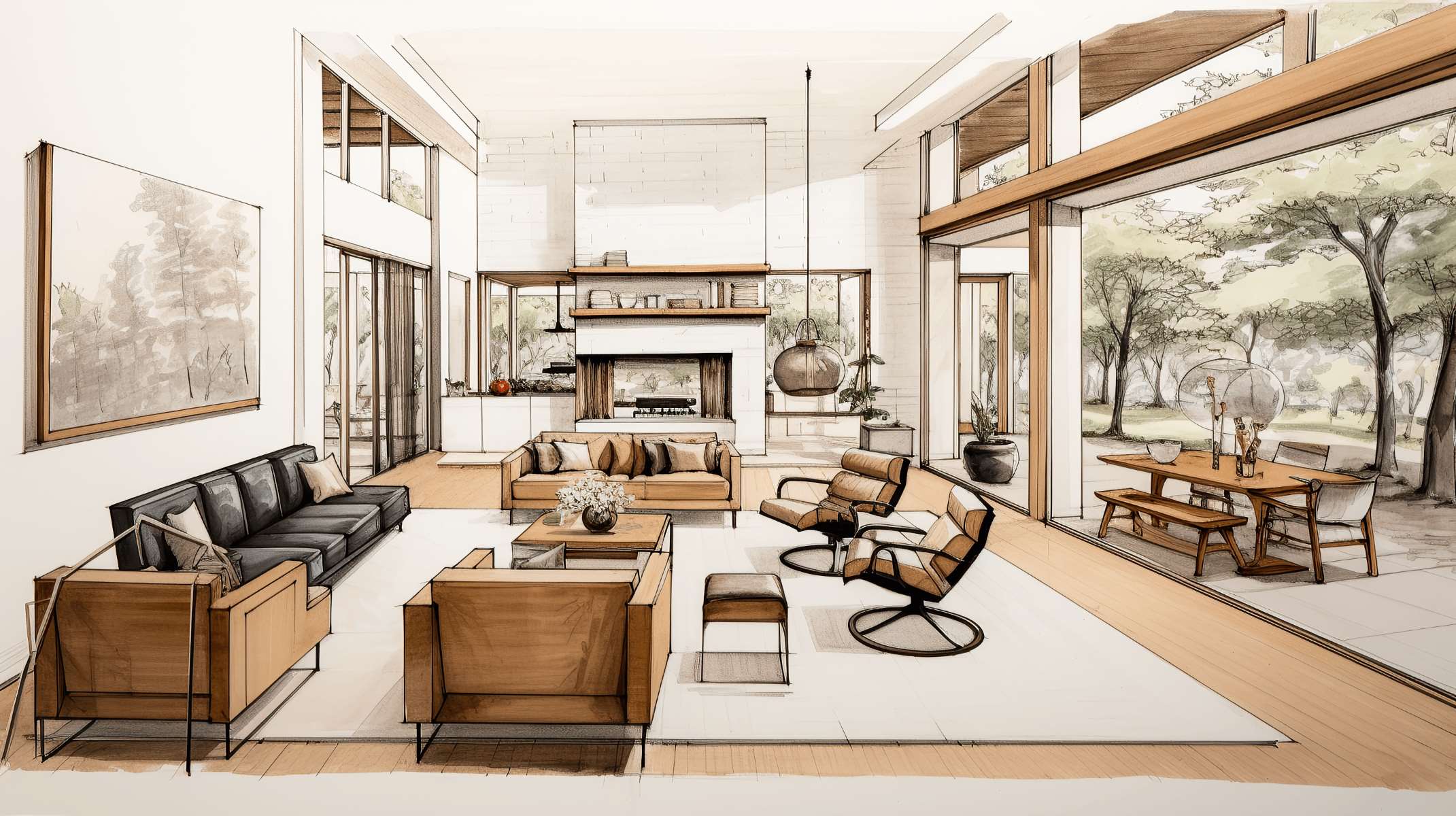

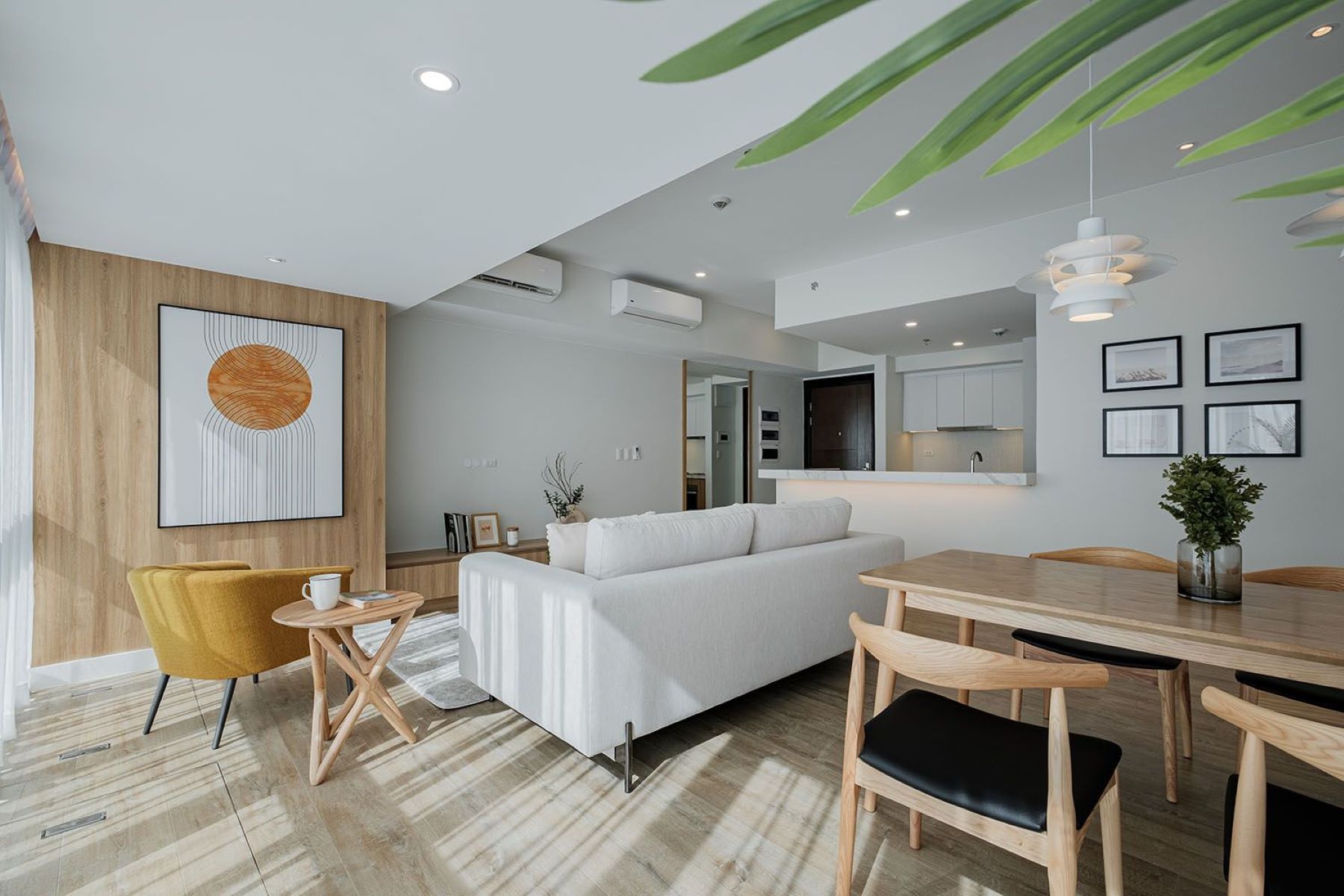
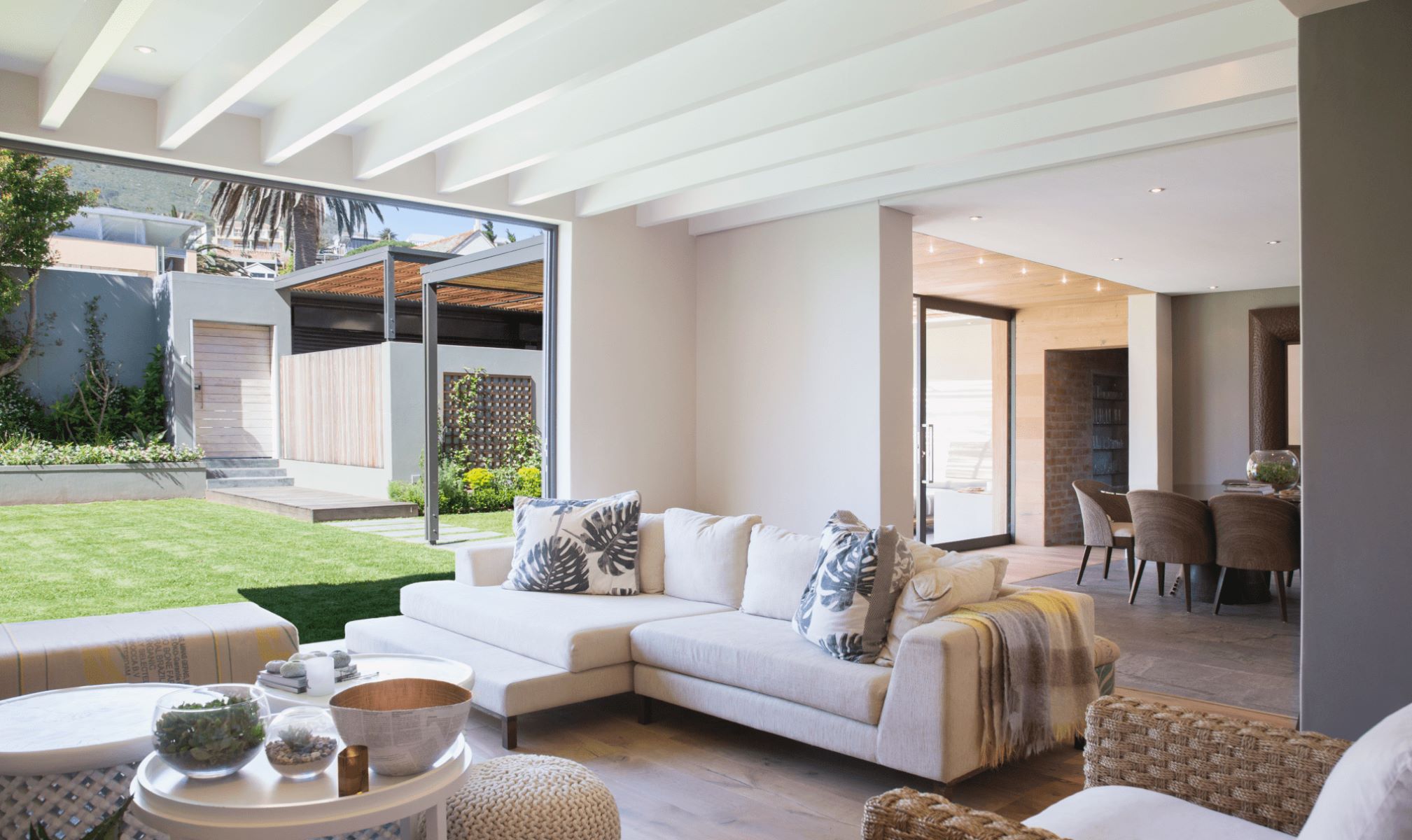

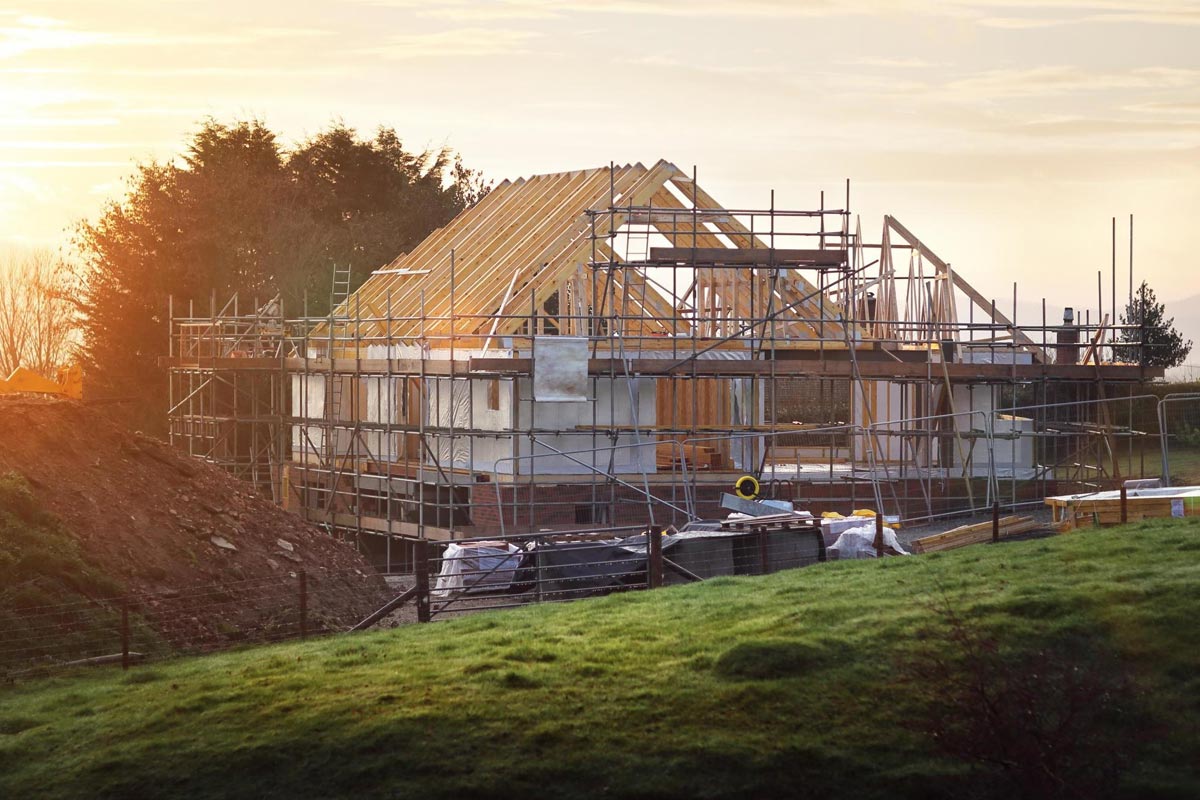






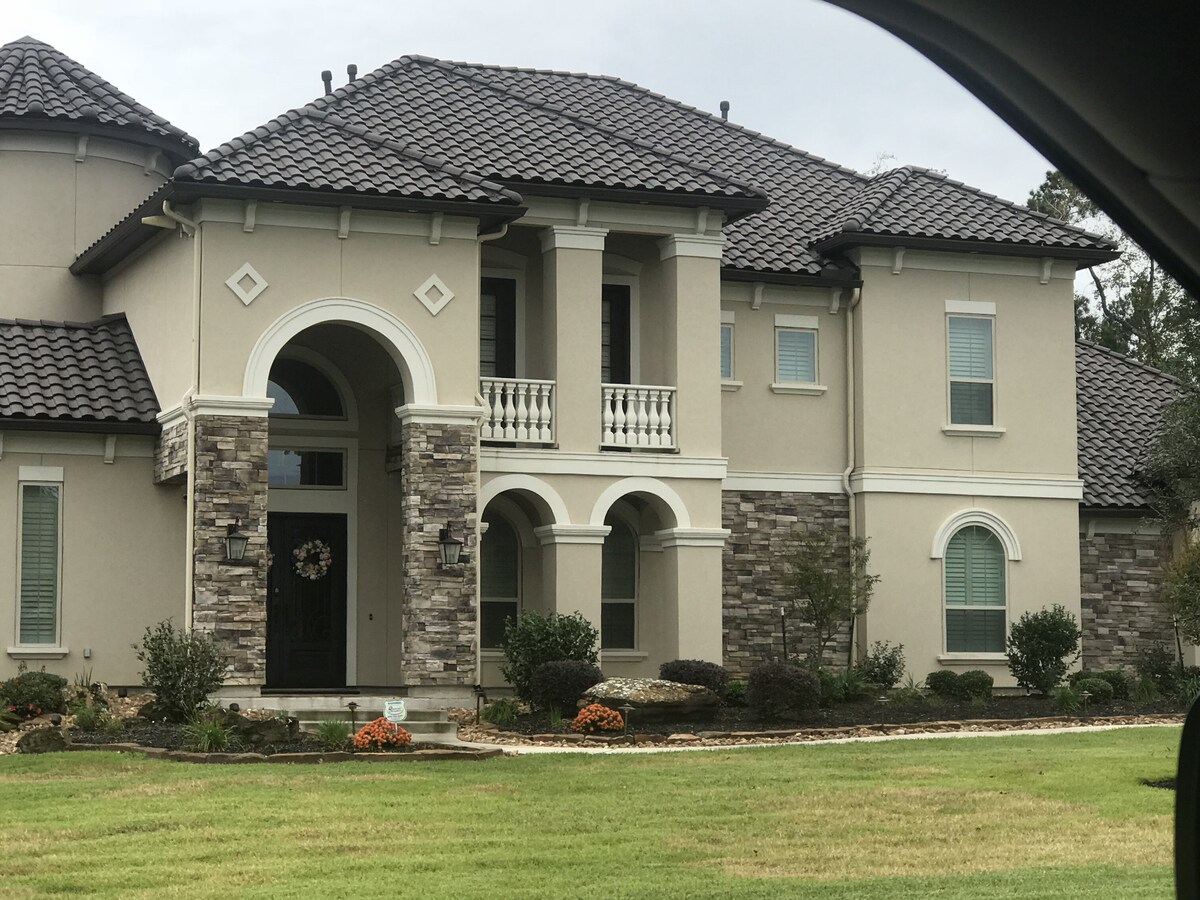

0 thoughts on “How Do You Know What Kind Of A Design For Your House”